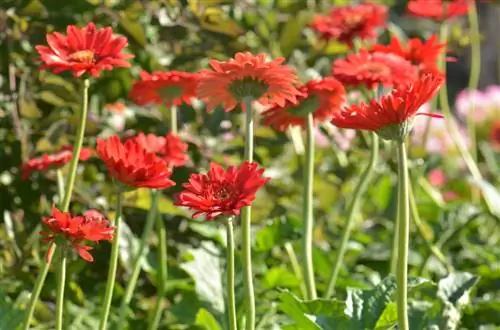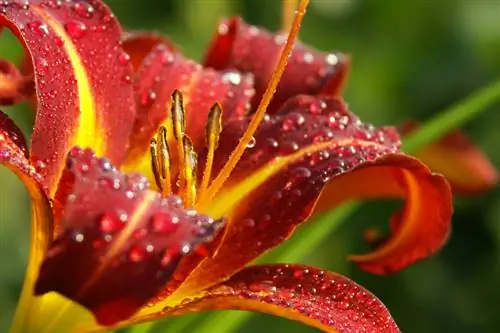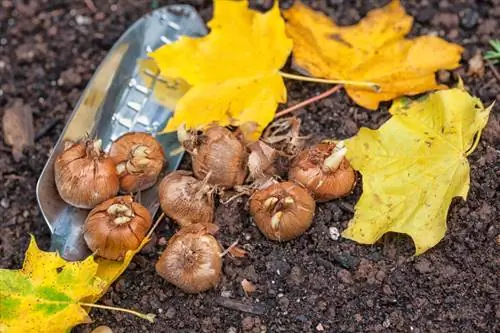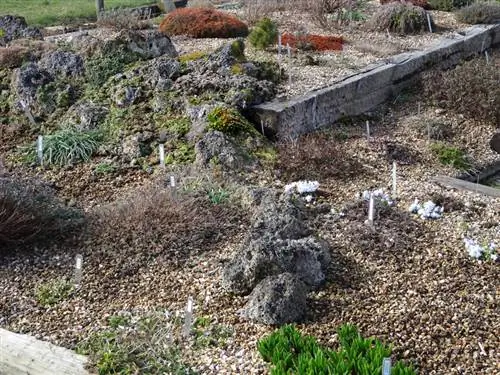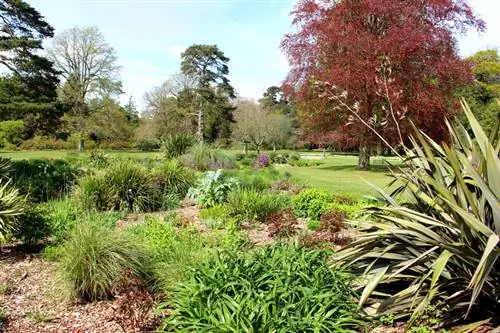- Author admin [email protected].
- Public 2023-12-16 16:46.
- Last modified 2025-01-23 11:22.
The low-growing, evergreen pennywort is also a good choice for pond planting. With its densely leafy, creeping shoots it can make the last unnatural bank areas disappear beneath it. Numerous yellow flowers in summer are also a welcome sight.
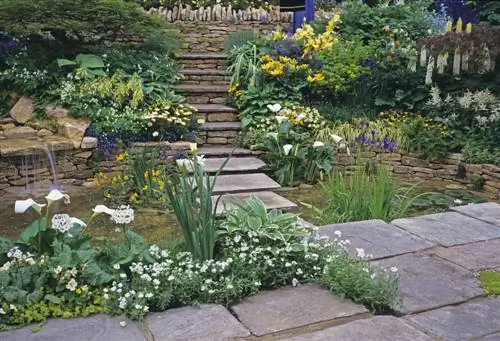
Why is pennywort suitable for pond planting?
The pennywort is ideal for pond planting as it grows in different lighting conditions and can thrive in water depths of up to 30 cm. It requires little maintenance and helps cover riparian areas and produce beautiful yellow flowers in summer.
Location and soil
Its place can be bright, partially shaded or even shady. Only the blazing sun should be avoided if possible. No matter what garden soil the pennywort finds, it will not be bothered by it. But the plant, also known as bride's weed, angel's weed, gold penny herb, thousand disease herb, coin herb, wreath herb, or wound herb, will be happy if it is allowed to root in fresh, loamy and nutrient-rich soil.
The optimal planting
In spring or autumn, the pennywort can be planted near the pond, directly at the edge of the pond and even in the specialist water zone. It can spread to a water depth of 30 cm and, as a hardy perennial, can continue to grow underwater in the cold season.
If you would like to use several penny herbs, keep a minimum distance of 30 cm, including from other pond plants. The herb will soon conquer the spaces in between. Although it only grows about 5 cm in height, it easily reaches a diameter of 50 cm.
Care as a pond plant
Pennigkraut basically doesn't need any extensive care. Near the pond it will be able to use its roots to find plenty of water. While a pennywort in the aquarium and in the balcony box is fertilized regularly and mostly organically, this is not necessary in the pond.
Since the pond water is often rich in nutrients, the pennywort is only fertilized if its changed appearance or stunted growth indicates that it is suffering from a deficiency. This also prevents the nutrients from reaching other plants via the water or even triggering algal blooms.
- do not use compost near the pond
- no other organic fertilizer
- use special fertilizer cones for pond plants
- put near the roots
Contain the spread regularly
The garden pond only offers limited space on its banks. The pennywort usually has to share this with other plants. However, it tends to spread widely and crowd out other pond plants. That's why you have to thin it out regularly in autumn.
Tip
The pennywort is not poisonous, but edible. Also interesting are its medicinal substances, which were widely known in earlier times and were therefore used a lot. It's worth researching this.


